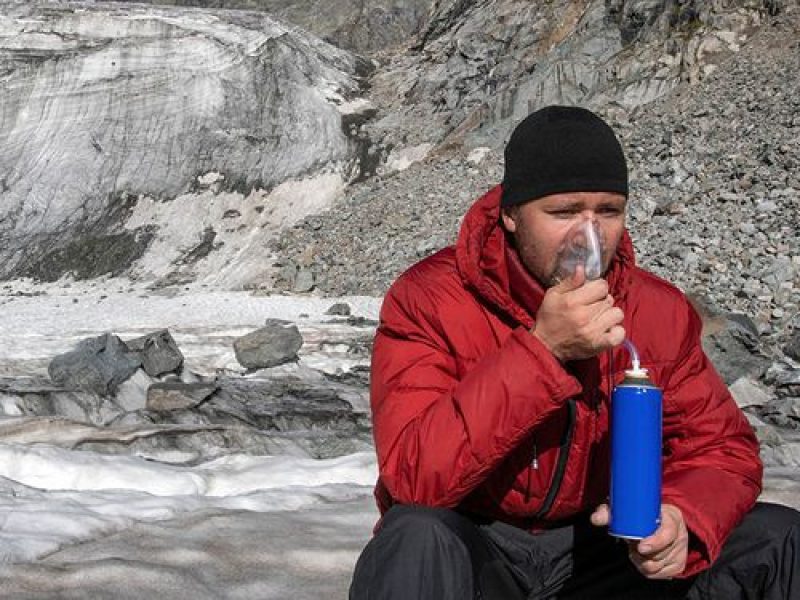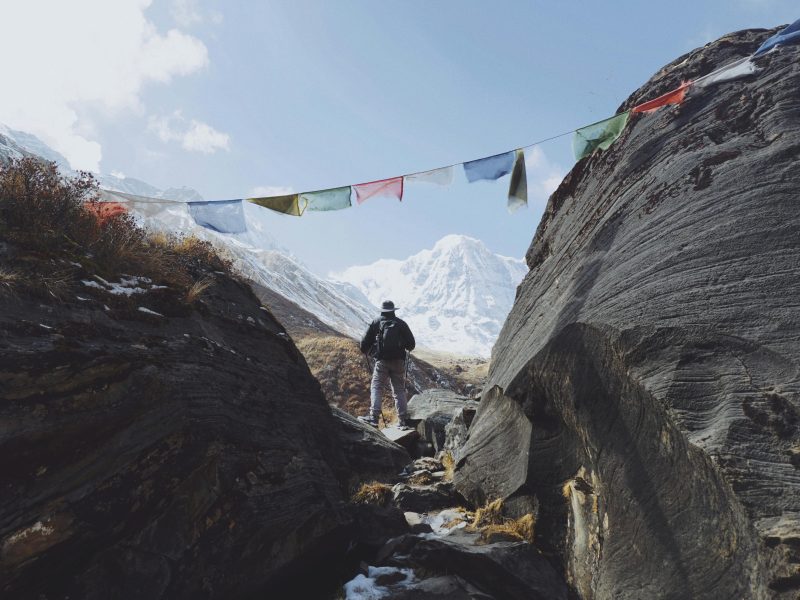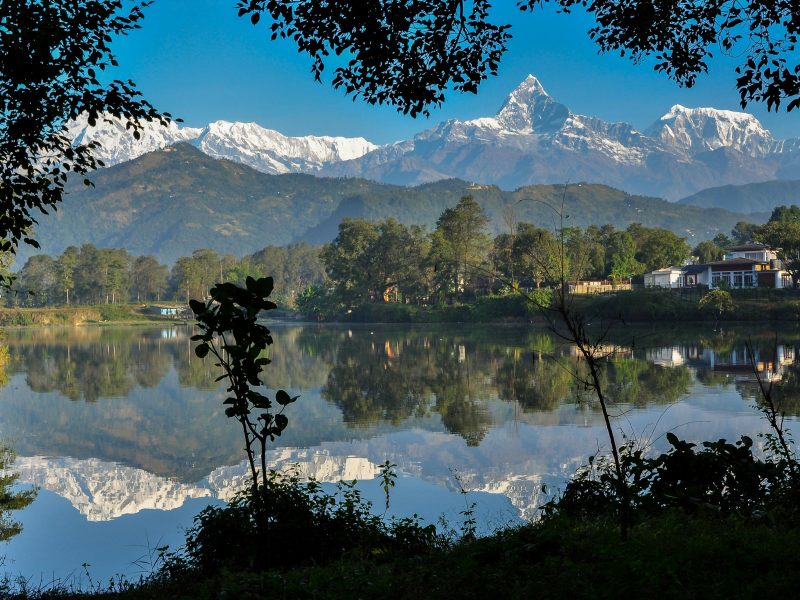Trekking in the Himalayas can be one of the most challenging as well as most rewarding once-in-a-lifetime experiences. For the indigenous, Nepali mountain peaks are highly sacred. And some folktales even talk about ‘moving poison’ in the high-altitude areas that can kill travelers. The ‘moving poison’ in such folklore is nothing more than altitude sickness. The modern term used in the English language.
Besides the mysticism and the allure of traversing the mountains, rivers, forests and ancient cultures of the indigenous people that live in the Himalayas, travelers must be aware and well prepared for altitude sickness.
Even if you are a physically fit person, who has an active life and has a rigorous training schedule, this phenomenon can actually catch up with you. It can derail all your plans and excitement.
As we know, prevention is better than cure. Here, in this blog, we shall walk you through every piece of information that you will need to educate and prepare yourself. Based on the experience as a trekking guide, we will walk you through the symptoms, prevention and treatment of altitude sickness.

What is Altitude Sickness?
The symptoms can range from mild to severe. Mild cases may involve headaches, fatigue, dizziness, nausea, and loss of appetite. More severe forms can include rapid breathing, vomiting, chest tightness, blue skin discoloration, confusion, and even loss of consciousness.
These advanced stages, such as High Altitude Pulmonary Edema (HAPE) and High Altitude Cerebral Edema (HACE), require immediate medical attention and descent to lower altitudes.
Why is Proper Acclimatization Crucial?
To prevent altitude sickness, it is crucial to allow the body time to gradually adapt to the changing environment. This process known as acclimatization involves a series of physiological adjustments that enable the body to function more efficiently at higher elevations.
During the acclimatization process, the body increases the production of red blood cells to carry more oxygen, and the respiratory system becomes more efficient at extracting oxygen from the air. This adaptation takes time, typically requiring several days of gradual ascent and rest at intermediate elevations.
Talking about the Himalayas, for Everest Base Camp trek itinerary, it is carefully designed to incorporate ample time for acclimatization. Trekkers typically spend two nights in Namche Bazaar (3,440m), two nights in Pang Boche (3,985m), and two nights in Ding Boche (4,410m) to allow their bodies to adjust to the increasing altitude.
These strategic rest stops, combined with gradual ascent and optional day hikes to higher elevations, enable trekkers to acclimatize effectively and minimize the risk of altitude sickness. Experienced guides closely monitor trekkers for any signs of altitude-related symptoms and are prepared to adjust the itinerary or initiate immediate descent if necessary.
Symptoms of Altitude Sickness
-
Mild symptoms:
When you travel to high elevations, your body may experience some discomfort due to the lower oxygen levels. Mild symptoms of altitude sickness can occur in various forms. One of the most common symptoms is a headache, which can range from mild to severe and often accompanies other symptoms. Fatigue is another common symptom, which can also vary in severity and be accompanied by other symptoms.
Additionally, people may experience dizziness or lightheadedness due to the lower oxygen levels. Nausea and vomiting are more common at higher elevations, and a decrease in appetite is also common due to the body’s difficulty digesting food properly. Furthermore, insomnia or difficulty sleeping can occur as the body struggles to adapt to the higher elevation. These symptoms are generally mild and can be managed with proper rest, hydration, and medication. However, if they persist or worsen, it is essential to seek medical attention to prevent more severe complications.
-
Moderate symptoms:
Moderate altitude sickness can manifest through several unpleasant symptoms as the body adjusts to the lower oxygen levels at higher elevations. One of the most common signs is rapid breathing or shortness of breath. This is the body’s natural response to compensate for the reduced oxygen availability in the air. Another symptom is vomiting, which can occur due to the body’s difficulty in properly digesting food under these conditions. The lower oxygen levels can disrupt the normal digestive processes, leading to nausea and vomiting.
Additionally, individuals may experience a sensation of chest tightness or congestion. This occurs when the body’s efforts to adapt to the lower oxygen concentration when the lungs and respiratory system work harder to extract the necessary oxygen. These moderate symptoms of altitude sickness are the body’s way of signaling the need for acclimatization and adjustment to the higher-altitude environment. Recognizing and addressing these signs can help prevent the progression to more severe forms of altitude sickness.
-
Severe symptoms:
The severe symptoms include a persistent cough, which can be a result of the lower oxygen levels in the blood. Additionally, individuals may experience confusion or disorientation due to the reduced oxygen supply to the brain. In extreme cases, it can even lead to a loss of consciousness or decreased consciousness, which is a critical condition that requires immediate medical intervention.
Furthermore, it may cause significant mobility issues, such as an inability to walk in a straight line. This can be a sign that the body is struggling to adapt to the lower oxygen levels at high elevations. If you or someone you know is experiencing any of these severe symptoms, it is crucial to seek medical attention immediately to prevent serious complications or even death.

https://www.pexels.com/photo/a-man-standing-on-a-rocky-mountain-6808520/
Prevention Strategies for Altitude Sickness
To ensure a safe and enjoyable trek, it is crucial to implement effective prevention strategies against altitude sickness. One of the most important strategies is to ascend gradually to higher elevations. This involves climbing at a slow and steady pace, allowing the body to adapt to the changing environment. This gradual ascent helps the body to adjust to the lower oxygen levels, reducing the risk of altitude sickness.
Another key strategy is to incorporate rest days into your itinerary. Rest days allow your body to recover and adapt to the higher elevation, which is especially important when climbing to extreme heights. This helps your body to adjust to the lower oxygen levels and reduces the risk of altitude sickness. Climbing high during the day and sleeping at a lower elevation is another effective strategy. This approach allows your body to adapt to the changing environment while minimizing the risk of altitude sickness.
By sleeping at a lower elevation, your body can recover and adjust to the higher elevation, reducing the risk of severe complications. Avoiding risk factors like smoking and alcohol is also crucial in preventing altitude sickness. These substances can exacerbate the symptoms of altitude sickness and increase the risk of severe complications. It is essential to avoid these substances during your trek to minimize the risk of altitude sickness.
Preventive medication like Acetazolamide (Diamox) can also help speed up the acclimatization process. This medication works by increasing the body’s ability to adapt to the lower oxygen levels, reducing the risk of altitude sickness. By taking this medication, you can help your body adjust to the higher elevation more quickly and safely. Implementing effective prevention strategies against altitude sickness is crucial for a safe and enjoyable trek. Gradual ascent, rest days, climbing high and sleeping low, avoiding risk factors, and preventive medication are all key strategies to consider. By following these strategies, you can minimize the risk of altitude sickness and ensure a successful and enjoyable trek.
Treatment
When it comes to treating altitude sickness, the most crucial step is to act quickly and decisively. If you experience severe symptoms like vertigo, vomiting, or severe breathlessness, the only effective treatment is to descend to a lower altitude immediately. Altitude sickness can quickly become life-threatening, and the only way to improve these serious symptoms is to get to a lower elevation as soon as possible.
For milder cases of altitude sickness, where you may experience headaches, nausea, or loss of appetite, the best approach is to rest at the same altitude and stay well-hydrated. In many cases, these minor symptoms can resolve within a few days if you simply take it easy and allow your body to acclimatize. Pushing on to higher altitudes while experiencing these symptoms is not recommended, as it can exacerbate the condition.
Having an experienced guide on your trek is invaluable when it comes to managing altitude sickness. These experts can closely monitor your condition, provide advice on the best course of action, and even suggest alternative hiking routes if necessary. Importantly, they can also ensure you receive prompt medical attention if your symptoms become severe, which could mean the difference between a safe and successful trek, or a dangerous and potentially life-threatening situation.
Nepali Traditional Remedies
-
Herbal Remedies:
In traditional Nepali medicine, altitude sickness is addressed using a combination of natural remedies and preventive measures that have been practiced for generations, particularly among the indigenous communities living in the Himalayas. Here are some traditional approaches: Talking about herbal remedies, locals rely on a variety of herbal remedies to combat altitude sickness and help their bodies adjust to the challenging environment.
Garlic is one commonly used for its believed benefits in increasing blood circulation and oxygenation, with people often consuming it raw or as part of their diet to better acclimatize to the high altitudes. Rhodiola, known locally as ‘rose root,’ is valued for its adaptogenic properties, which are thought to enhance the body’s resilience to physical stress and improve oxygen utilization. Ginger is another popular remedy, with ginger tea or raw ginger being consumed to alleviate symptoms like nausea and headaches. Additionally, the berries of sea buckthorn are rich in vitamins and antioxidants and are believed to help improve overall health and energy levels, making them particularly beneficial at high altitudes.
-
Dietary Practices:
Nepali medicine emphasizes the importance of consuming warm fluids such as herbal teas and soups to maintain hydration and warmth, which is crucial since dehydration is a significant risk at such elevations. Additionally, diets rich in carbohydrates are recommended because they provide a quick source of energy, helping to sustain energy levels and stamina, thereby mitigating the effects of altitude.
-
Traditional Practices:
One of the most important pieces of traditional wisdom is the slow ascension to higher altitudes, allowing the body ample time to acclimatize naturally, which is critical in preventing acute mountain sickness. Alongside this, making sure sufficient rest and avoiding overexertion are key practices that help the body adjust to the lower oxygen levels found at higher altitudes. Additionally, while coca leaves are not native to Nepal, they have been used in neighboring regions such as the Andes for their benefits in combating altitude sickness. In some areas, similar practices involve the use of local plants with comparable properties, integrating regional knowledge to enhance health and well-being at high elevations.
-
Preventive Measures:
Drinking plenty of water is essential to prevent dehydration, which can exacerbate altitude sickness symptoms. Additionally, avoiding alcohol and tobacco is advised, as these substances can impair acclimatization and worsen symptoms of acute mountain sickness. By combining these traditional methods with modern knowledge and practices, individuals can better prepare for and mitigate the effects of altitude sickness, ensuring a safer and more enjoyable trekking experience.

https://www.pexels.com/photo/landscape-photography-of-phewa-lake-14989388/
Additional Tips
When embarking on the mountains, it is crucial to prioritize your health and well-being by following additional tips. Firstly, staying hydrated and consuming nutritious meals is vital for acclimatization. Adequate hydration helps your body adjust to the lower oxygen levels at high altitudes, while a balanced diet provides the necessary energy and nutrients to support your physical demands.
Additionally, being prepared for sudden changes in weather and climate conditions is essential. High-altitude treks are often marked by unpredictable weather patterns, and being prepared with appropriate gear and clothing can significantly reduce the risk of altitude sickness. It is also essential to consult with a doctor before the trek and be prepared for medical attention if necessary. Altitude sickness can be a serious condition, and prompt medical attention is crucial in preventing its progression to more severe forms.
Having a comprehensive understanding of your medical history and any pre-existing conditions can help your guide or medical team provide the best possible care. Furthermore, being aware of the signs and symptoms of altitude sickness can enable you to seek medical attention promptly if you experience any adverse effects. By prioritizing your health and being prepared for any eventuality, you can ensure a safe and enjoyable trekking experience during the trek in the Himalayas.
Disclaimer and Medical Advice
When embarking on the Himalayas, it is crucial to prioritize your health and safety. In addition to understanding altitude sickness, there are several additional tips to keep in mind. Staying hydrated and consuming nutritious meals are vital for acclimatization. Weather and climate conditions can also impact your trek, so it is essential to be prepared for sudden changes. Furthermore, it is crucial to consult with a doctor before and during the trek to ensure you are in optimal health for the adventure.
It is important to note that the information provided is not intended to replace diagnostic or medical advice. If you are planning to embark on this journey, it is essential to consult with a doctor before and during the trek. This includes discussing your medical history, any pre-existing conditions, and any medications you are currently taking. Additionally, it is crucial to listen to your body and seek medical attention if you experience any symptoms of altitude sickness or other health issues. Remember, your health and safety should always be your top priority when undertaking such a challenging adventure.

Comment (0)